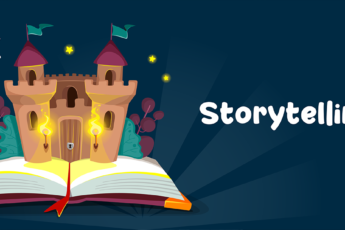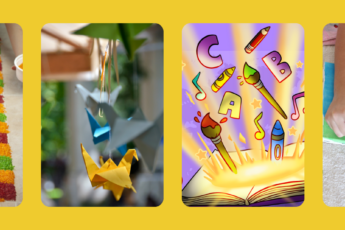Helping Kids Fail ‘Safely’

When society makes failure synonymous with all things bad or something to avoid at all costs, children are learning at an early age that their worth is tied to the success of their actions. Failure can be scary. Failure is a part of life, whether it’s a 5-year-old finger-painting a masterpiece or a 55-year-old failing to use a new computer program. It doesn’t matter if the failure was avoidable or not, failure will happen to the best of us.
But how do we help kids deal with these failures? How do we teach them that failing is okay and that they should try again?
It’s hard for most educators to cede control of their children. But allowing them to make mistakes and stay safe is vital in the learning process. Here are some ways you can help your child learn to fail safely:
Emphasize their growth mindset
A growth mindset changes the way the brain reacts to failure, and it helps children learn from their mistakes. They don’t interpret failure as a reflection of their self-worth, and quickly bounce back to recover from their mistakes. Failure is inevitable. That is why it’s so important to encourage your children to embrace a growth mindset. When kids feel empowered to improve, that’s when they’re most likely to succeed — and with a growth mindset, they’ll be more open to trying new things and embracing challenges.
Let them fail
Since the time our children were infants, we’ve offered them a safe, secure life. When they fall, we rush to their side and make sure they’re okay. We go to great lengths to avoid adversity and challenge because we want to protect them from experiencing hardship or failure. But shielding children from adversity isn’t the same as protecting them. It’s essential to allow your child to experience failure. Without difficult situations to navigate, kids won’t develop critical problem-solving skills—and nobody expects a baby to ride a bike without training wheels. Teach them how to cope with failure, so they don’t fear it — and make sure they earn prizes when they overcome a challenge.
Share your experience
Children like to emulate what they see. You can model positive ways to handle setbacks and challenges by being open about your struggles. You can point out that when we fail at something, we often learn from it and even get better for having tried. Likewise, when you learn to fail forward, your kids will learn from painful experiences and grow from mistakes.
Kids can be a little unrealistic in thinking their ideas and plans will always lead to a remarkable life. So you need to teach them that it’s okay if things don’t always work out the way they think.
Empathize with them
By meeting your children with empathy when they fail in front of their peers, you’re modeling that emotion for them. They can see what it looks like when someone is hurt or disappointed and find the words to express those feelings. This doesn’t mean they should be immune from all criticism. But it does mean that if they make a mistake, it’s okay, and the sooner you teach them that, the better!
Final Thoughts
Learning to fail can be painful at first, but it is an essential part of the learning experience, for children will only succeed in life if they can acquire the knowledge and skills needed to handle whatever life throws their way. Our young learners need to know that failure is an integral part of the learning experience. Else they may become afraid of trying anything new for fear of doing it wrong.
Educators and parents can be a key part of bringing in this cultural change. Educators can design and build schools, pedagogy, and curriculum in a manner that encourages students to learn from failure. This can truly prepare students for transformative success.
Parents too are an essential cog of the learning experience. By providing a nurturing environment, they can be a much-needed guide to children. So that they learn that getting it right at the first time of asking isn’t essential, and that it is more important to do the right thing. The best education doesn’t necessarily come from the classroom. But from how adult role models teach kids to be resilient in the face of whatever life throws their way.
Know of an inspiring educator or educational story that encourages life-long learning in students? Send us a message at marketing@squarepanda.in or comment below, and we’ll feature your story!




Leave a Comment